
10 Things To Know About Niki de Saint Phalle
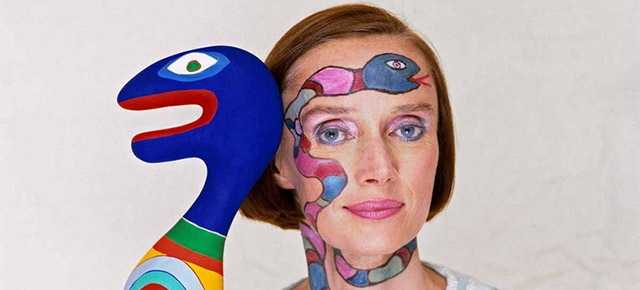
“In the human heart there is an urge to destroy all. To destroy is to affirm one’s existence in the face of and against everything.” Artsper introduces you to 10 things you should know about revolutionary artist, Niki Saint Phalle.
Key Moments in Saint Phalle’s Career :
- 1930: Niki de Saint Phalle, born Catherine Marie-Agnes Fal de Saint Phalle is born.
- 1948-1950: Works as a model for Vogue, Harper’s Bazaar and other French and American magazines
- 1950: Produces her first oils and gouaches.
- 1952: Has a nervous breakdown and discovers art as the cure.
- 1956: First solo exhibition of paintings in St. Gallen, Switzerland
- 1961: Produces her famous Tirs paintings.
- 1961: Invited to join Nouveau Réalisme
- 1967: Works with Tinguely on Le Paradis Fantastique, a commission from the French government for the French Pavilion at Expo ‘67 in Montreal.
- 1975: Develops ideas for a sculpture garden in Tuscany.
- 1991: Awarded the 12 Praemium Imperial Prize, an award considered to be the equivalent to the Nobel Prize in the art world.
- 2002: Niki de Saint Phalle dies at the age of 71
1. Niki isn’t her real name
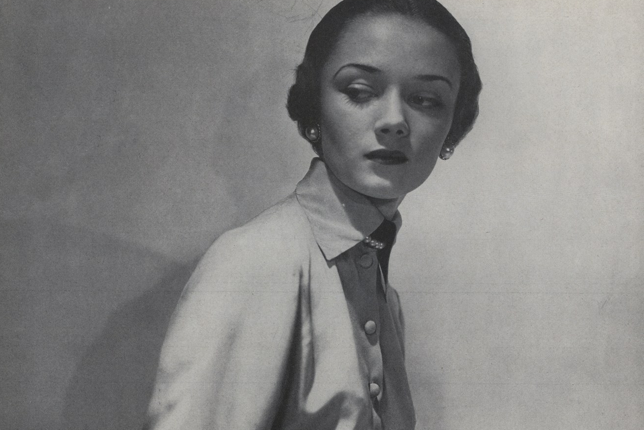
Born in 1930, Niki de Saint Phalle was originally named Catherine Marie-Agnès Fal de Saint Phalle. Her mother, Jeanne-Jacqueline Harper, was American and her father, André Marie Fal, was French.
2. She carried a huge secret

For most of her life, Saint Phalle carried a traumatising secret; she was raped by her father at just eleven years old. This horrific event destroyed all innocence harvested by the young artist, causing her to become an unstable and disturbed young woman. Despite her life being tainted by this abysmal secret, she only revealed it her book, Mon Secret (My Secret), in 1994 at the age of sixty-four.
3. Saint Phalle was a beautiful woman

In 1948, the artist was scouted by a modeling agency at the tender age of 17. “One day I was on my way to a dance, and I met a man who owned a modeling agency. He asked me if I’d like to become a model and I said yes.” She was heavily encouraged by painter, Hugh Weis, and would go on to pose for some of the biggest magazines in fashion. Until the age of 25, Saint Phalle braced the covers of Vogue, Elle and Life, eventually abandoning modeling to focus on her artistic career.
4. Art saved her from depression
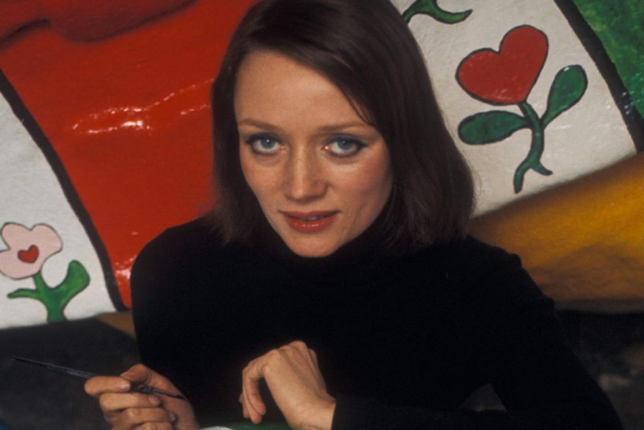
After travelling between France and the United States, the artist suffered a severe nervous breakdown. In 1953, at just 22, she was sent to a psychiatric hospital in Nice where she received memory-altering electroshock treatment. Heavily encouraged by psychiatrists, Saint Phalle devoted herself to art: “I started painting in the madhouse, where I learnt how to translate emotions, fear, violence, hope and joy into painting. It was through creation that I discovered the sombre depths of depression, and how to overcome it.” It was during this tumultuous period that Saint Phalle launched her career as an artist; reconnecting with herself and overcoming her mental trauma through painting and sculpture.
5. Her Tirs paintings made her famous
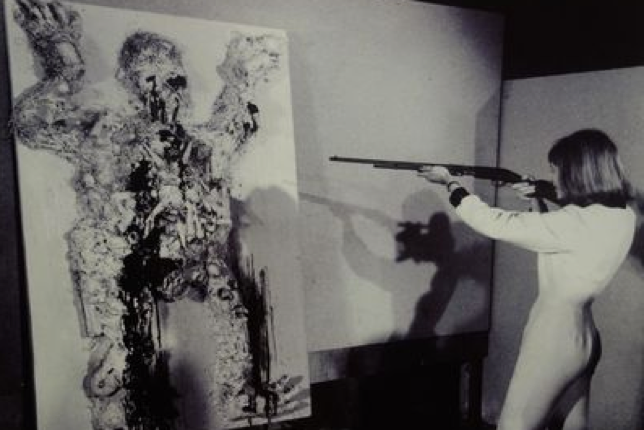
Her first Les Tirs (the shots) exhibition took place in 1961, during which she fired shots of paint at her canvas, creating emotionally-charged explosions of colour. Saint Phalle’s Les Tirs series not only made her famous worldwide, but also provided her with a vital outlet for her inner demons. Shooting at her canvas was for Saint Phalle a way to shoot at her father, society and all the difficulties she had encountered during her life.
6. Niki de Saint Phalle was a committed activist

Throughout her career, the artist was committed to campaigning against racial segregation, social injustices, AIDS and, above all, women’s lack of rights. Later in her career, Saint Phalle discovered “a deeper, more feminine world.” As a result, her art became an ode to femininity, both in sensual and empowering ways; criticizing conservative and traditional feminine values.
7. She is known for her Nanas
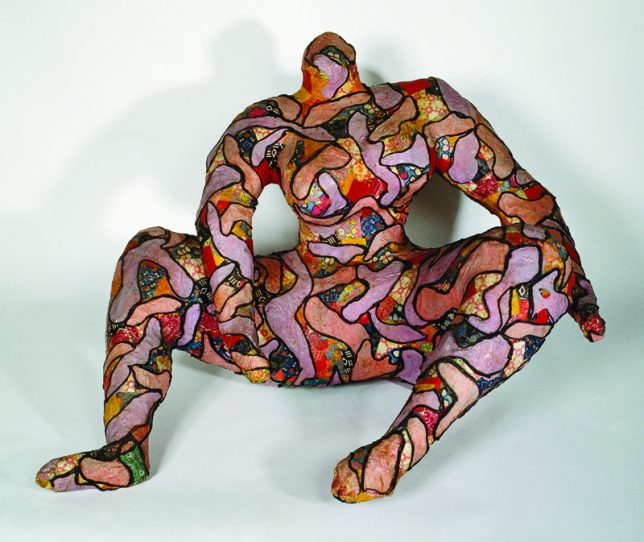
In 1965, she created her first Nanas, a slightly derogative French term for a young girl. These were large-scale sculptures inspired by the artist’s close friend, Clarice Rivers, who was pregnant at the time.
8. She created a film

An artist of many talents, Saint Phalle was simultaneously a painter, sculptor and film director. Her film Daddy, was pieced together using autobiographical materials that heavily criticized her family. In the film, Saint Phalle is seen attacking a figure reminiscent of her father; providing a channel for the anger and trauma experienced in childhood. She collaborated with Peter Whitehead, an influential filmmaker known for his forward thinking and sexually liberating films.
9. Niki de Saint Phalle created her own sculpture park
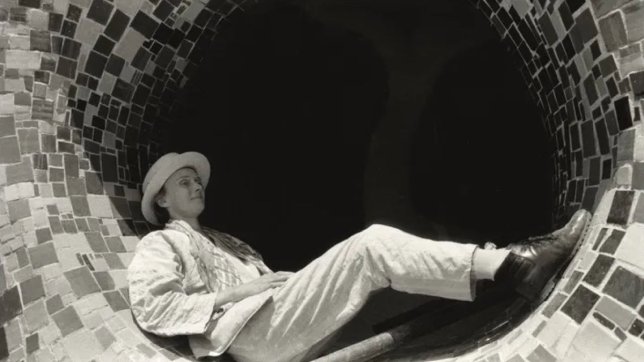
Inspired by Gaudi’s Parc Güell in Barcelona, the artist created Le Jardin des Tarots in Capalbio, Tuscany. Her monumental structures were inspired by Tarot cards, resulting in huge ceramic, mosaic and glass figures. Some of the colourful sculptures are up to fifteen metres high and are habitable; providing Saint Phalle with her very own artist residency during the construction of the park.
10. She suffered from chronic respiratory failure

For years, Saint Phalle worked with various materials that violated health and safety rules, inhaling incredibly toxic fumes on a daily basis. As a result, she suffered from inflamed lungs, which were gradually destroyed by the polyester dust produced from her sculptures. Her art simultaneously saved her and killed her; dying from respiratory failure in 2002, at the age of 71.
Important Exhibitions:
- 1956: First solo exhibition of paintings in St. Gallen, Switzerland
- 1959: Included in the group exhibition Comparison: Peinture-Sculpture at the Musée d’Art Moderne de la Ville de Paris.
- 1961: First solo exhibition in paris at Galerie J with assemblages, tirs and a public shooting area.
- 1967: First retrospective Les Nanas au Pouvoir is held at the Stedelijk Museum, Amsterdam.
- 1980: First retrospective to her graphic work opens at the Ulm Museum.
- 1992: The Kunst und Ausstellungshalle, Bonn organizes a large retrospective.
- 2002: The exhibition From Niki Matthews to Niki de Saint Phalle opens at The Sprengel Museum.
If you want to find out more about Niki de Saint Phalle’s creative process…

About Artsper
Founded in 2013, Artsper is an online marketplace for contemporary art. Partnering with 1,800 professional art galleries around the world, it makes discovering and acquiring art accessible to all.
Learn more













